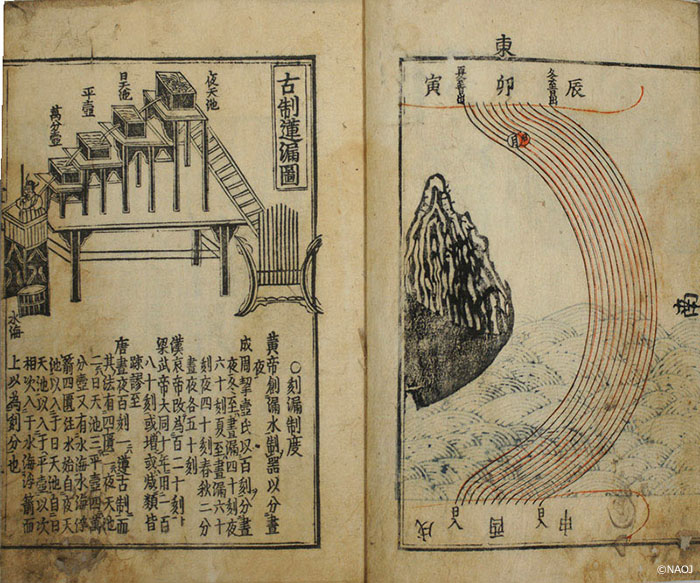Koseirenrouzu, Diagram of an Ancient Lotus Water Clock from the “Senmyo Calendar ”
Historical illustration・

| First Publication | 1644 (Kan’ei era 21) |
|---|---|
| Author | Unknown |
| Credit | Collection of the National Astronomical Observatory of Japan |
Historical illustration・

| First Publication | 1644 (Kan’ei era 21) |
|---|---|
| Author | Unknown |
| Credit | Collection of the National Astronomical Observatory of Japan |
This drawing from the “Senmyo Calendar” depicts a roukoku, a type of water clock. Under the heading “古制蓮漏図, Koseirenrouzu,”(Diagram of a Ancient Lotus Water Clock) the history of water clocks is written in Chinese. It states that they were invented by the Yellow Emperor, but putting aside the reputed dates of the legendary Yellow Emperor, at the very least we can say that these water clocks existed in China before the Christian era (i.e. in B.C. times).
Elsewhere, in the “Nihonshoki” it is recorded that Prince Naka-no-Oe created the first water clock in Japan in 660 A.D. It also says that in 671 A.D. after Prince Naka-no-Oe had ascended to the throne to become Emperor Tenji, the water clock was setup on a new frame and used to announce the hours with a bell and drum. In modern Japan, June 10 is called “Time Commemoration Day” in honor of this event.
There are no remaining diagrams or such of the water clocks used long ago in Japan, so their shape is not known for certain. But since they were constructed based on knowledge imported from China, it is thought that they probably resembled Chinese ones. Roukoku style water clocks measure the time through the depth of the accumulated water. Because as the water level lowers, the flow weakens, it is difficult to keep regular time by simply pouring the water from a hole. This diagram of a Roukoku shows it using tubes, but in reality they seem to have been devised using siphons to standardize the flow speed of the water divided among the 4 boxes.
Translation by: Ramsey Lundock (NAOJ)